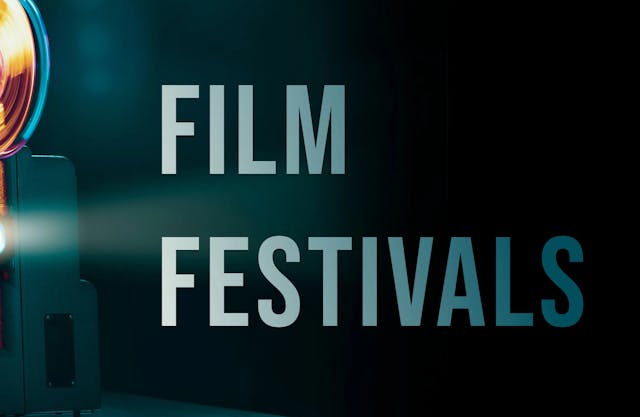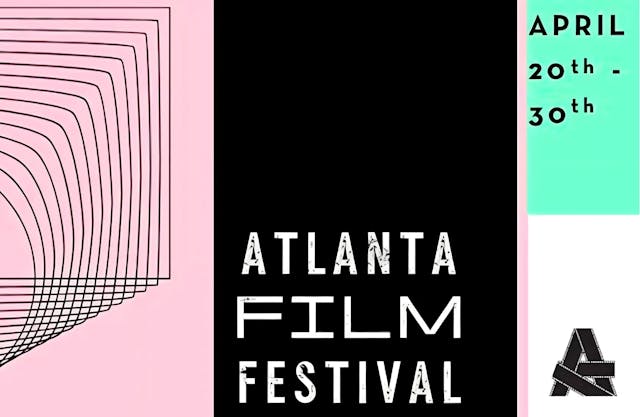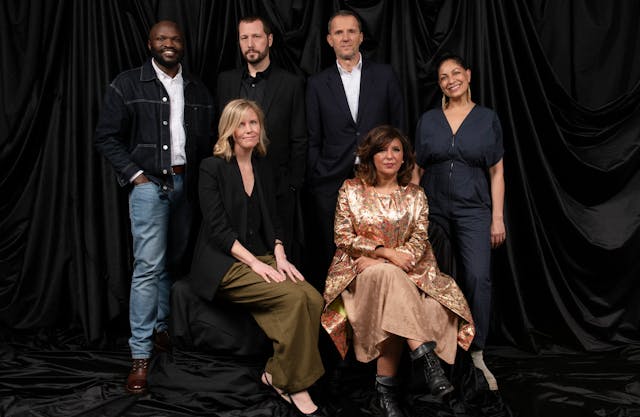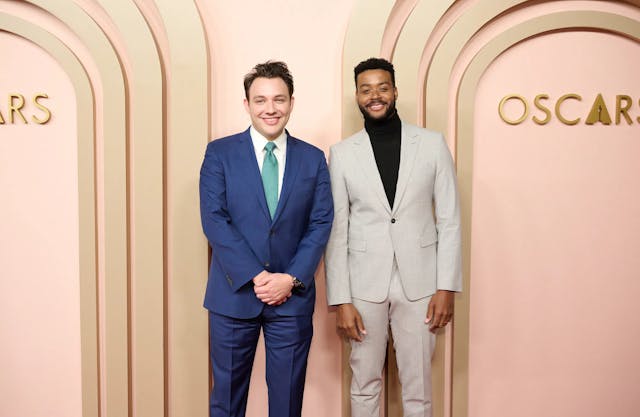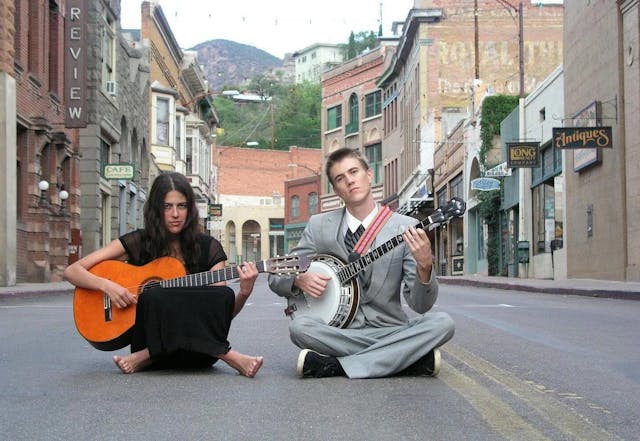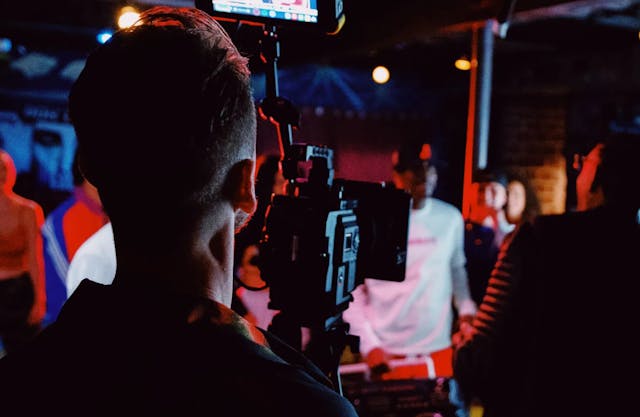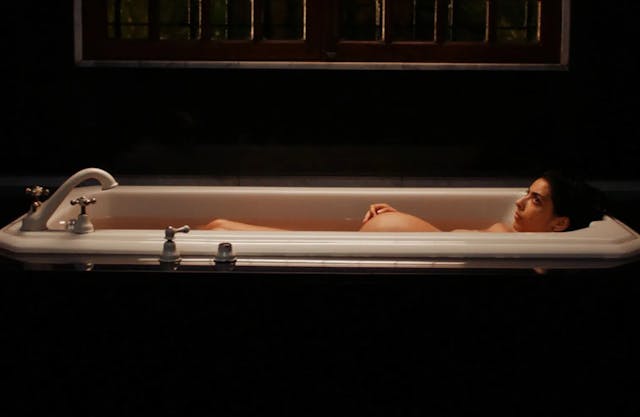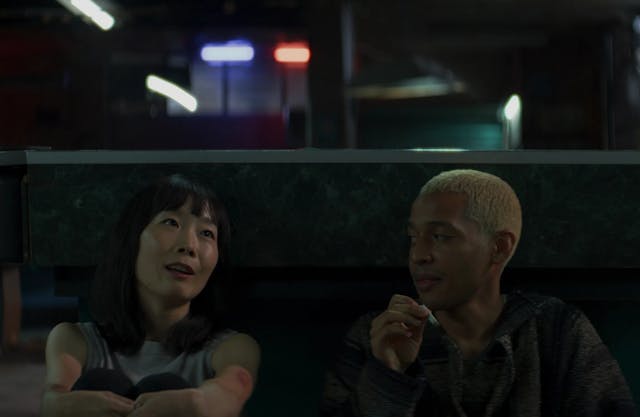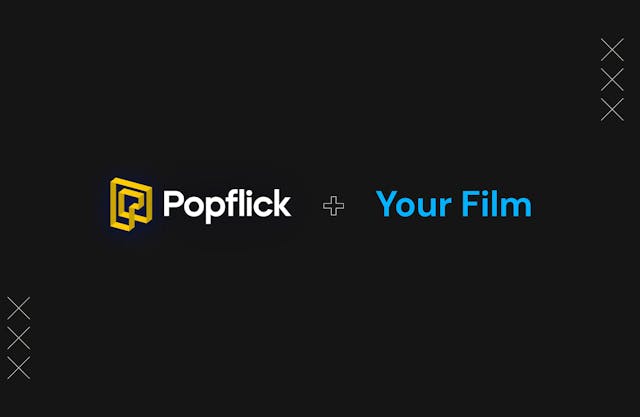Everything You Need to Know About The Sundance Film Festival

Indie Film Main Event: Sundance braves the Utha winter / Photo by Stephen Speckman, courtesy of The Sundance Institute.
It’s not hyperbole to say that the Sundance Film Festival is the most important fest in the USA - we still love you, Tribeca! -. Ask any up-and-coming filmmaker or starry-eyed movie buff who dreams of stepping behind the camera. They will all tell you Park City, Utah, is their first choice to premiere their magnum opus - real or imaginary.
The Fest has been raising hell since the seventies, but it came of age to become the most influential film festival in the country on January 20, 1989. That’s the date when Steven Soderbergh’s “Sex, Lies, and Videotapes” premiered. The movie played to sold-out houses and took the Grand Jury Prize and the FIPRESCI award. A bidding war culminated with a small, scrappy distributor nabbing theatrical distribution rights for the U.S. The name might ring a bell: Miramax. A couple of months later, the gamble paid off. The movie won the Palm d’Or at the Cannes Film Festival. Upon release in August 1989, it took over $24 million in ticket sales. It sounds like peanuts now, but it was unheard of back in the day.
The provocative drama starring James Spader and Andie McDowell was a bona fide sensation. It heralded the golden age of American Independent Filmmakers, dominating popular culture in the '90s. From then on, Sundance became the strongest force in the country's art house distribution. The indie wave petered out in the Aughts, but the Festival remains as influential as ever.
What is the Sundance Film Festival?
The Sundance Film Festival is a celebration of independent filmmaking. The program includes 11 competitions and sidebars.
Competitive Categories
U.S. Dramatic Competition
This is the main event for American filmmakers. Ten movies vie for top prizes, with commercial distribution as a nice aside. You can get your share of WASP-y artists going bohemian with a camera and well-established actors dabbling in directing - Jesse Eisenberg has had his two films as a director in competition -. However, minority filmmakers and first-generation Americans, descendants of immigrants, or foreign directors working in the U.S. help to bring some diversity into the white landscape. Some winners go on to Oscar glory, like the much-maligned CODA (Sian Heder, 2021).

Father knows best: René Perez Joglar and Lio Mehiel are family in "In The Summers." / Photo by Michael Hurcomb, courtesy of The Sundance Institute.
U.S. Documentary Competition
Don’t be fooled by the title “U.S. Documentary Competition” moniker. The ten documentaries in this competition don’t necessarily deal with US-based issues. Almost half of the 2024 crop looked around the world. Carla Gutierrez' “Frida” portrays the life of Frida Kahlo, a giant of Mexican art; Michael Dweck and Gregory Kershaw's “Gaucho Gaucho” immerses you in the life and lore of Argentinian cowboys, Brendan Bellomo and Slava Leontyev's “Porcelain War” follows artists fighting in Ukraine, Emily Kassie and Jullian Brave NoiseCat's "Sugarcane” explores the poisoned legacy of child abuse perpetrated by Catholic priests and nuns against indigenous children in Canada. All of them took major prizes. So, don’t be shy about your idea to do a doc about your experience in the Peace Corps!

Way down south: nothing further from the U.S. than the Argentinian cowboy enclave in the documentary "Gaucho Gaucho" / Photo courtesy of The Sundance Institute.
World Cinema Dramatic Competition
The world is a leveled playing field in this category. Even British productions, favored by other institutions as indistinct to U.S. production - hey, Oscars! - have to compete with non-US movies. Ten slots are too few to encompass the riches from every corner of the globe. I’m guessing curators aim to strike a balance among regions and languages, which may pose an advantage if your project comes from a place with little to no production industry.
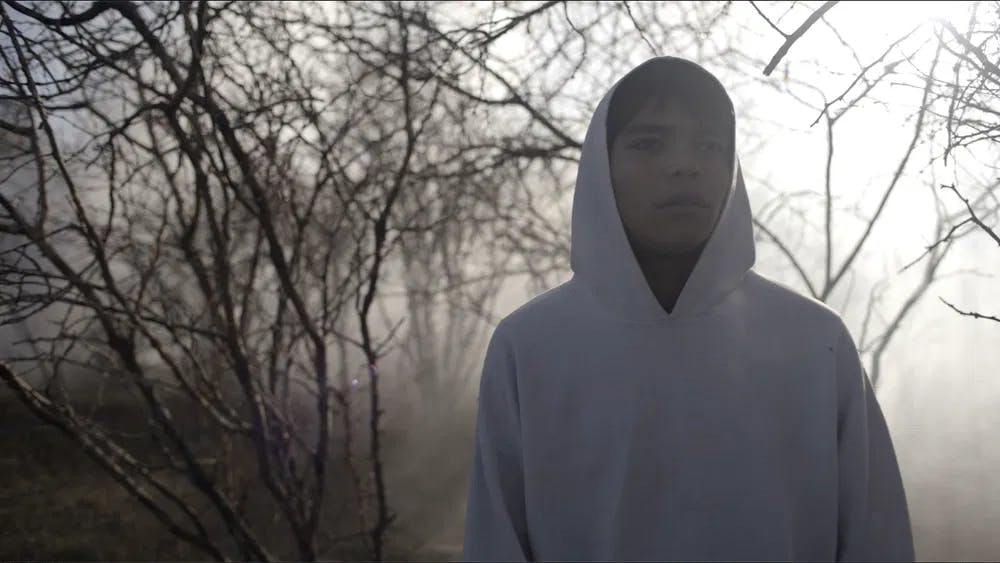
A boy called "Sujo": Juan José Varela stars in the Mexican drama, winner of the World Cinema Grand Jury Prize at Sundance 2024. / Photo courtesy of The Sundance Institute.
World Cinema Documentary Competition
With the U.S. Documentary competition expanding outside of U.S. borders, the major distinction regarding the World Cinema Doc Competition lies in the filmmakers’ nationality and level of projection in the U.S. Chilean Maite Alberdi had five feature-length docs, two shorts, and an episode for PBS’ POV series before entering the competition in 2020 with “The Mole Agent.” She won the Gran Jury Prize in 2023 with “The Eternal Memory.”

Congo Blues: "Soundtrack to a Coup d'Etat," winner of a Special Jury Award for Innovation in the World Documentary competition. / Photo by Terence Spencer, courtesy of The Sundance Institute.
SHORTS
Shorts are divided into two categories according to their origin: U.S. and international. Within each, there is no distinction regarding genre: fiction, documentary, and animation play on a level field. It's an embarrassment of riches.
To be considered a short film, your movie must be 49 minutes long, including credits. A jury of three filmmakers decides how to award the prizes, which mirror those for feature-length movies: the Grand Jury Prize may come from either category, which has its own "Best of" mention. Besides, the jury has a wide berth to conceive particular prizes for acting and technical achievements. The 2024 jury was comprised of Producer Christina Oh (Minari, Ad Astra), actor Danny Pudi (Community), and director Charlotte Regan (winner of the 2023 Grand Jury Prize for "Scrapper").
In 2024, there were 5,223 U.S. submissions. Only 30 entered the official competition. Out of 6,799 international shorts, only 23 entered the contest.

Queer and wacky: "Pisko The Crab Child is In Love" won the Short Film Special Jury Award at Sundance 2024. / Photo courtesy of The Sundance Institute.
NEXT
Festival copy says this sidebar, presented in partnership with Adobe, includes “pure, bold works distinguished by an innovative, forward-thinking approach to storytelling.” The 2024 selection included six films, of which 3 earned special awards branded for NEXT. If you make it into this competition, your chances of winning something are 50%, if my math is right. Don’t get too excited, though. You can’t choose which section to compete in. It’s up to the selection committee to decide where they program chosen films.
Non Competitive Categories
Midnight
¡Ah!…the Midnight sidebar, encompassing - per Sundance - “horror films and wild comedies to chilling thrillers and works that defy any genre.” It’s always a mixed bag of new talent, established auteurs, and pro fare already in the rooster of cool distributors. U.S. and world cinema get attention, but nothing is guaranteed.
On one extreme, you have “Love Lies Bleeding,” Rose Glass’ star-studded indie thriller, using the Festival to launch just a few weeks before their theatrical release. On the other hand, you have scrappy, bizarre projects that come out of nowhere and fade in the haze of streaming over-programming. Check out the disturbing “In My Mother’s Skin” (Kenneth Dagatan, 2023), a fanciful horror movie. Set in the Philippines, it mixes myth with historical allegory and family drama in an unsettling fashion. When Amazon Prime acquired global rights, it seemed as if Dagatan had it the jackpot. Alas, they bypassed a theatrical release and sent it straight to streaming on October 12, pointing toward Halloween. It made nary a peep.
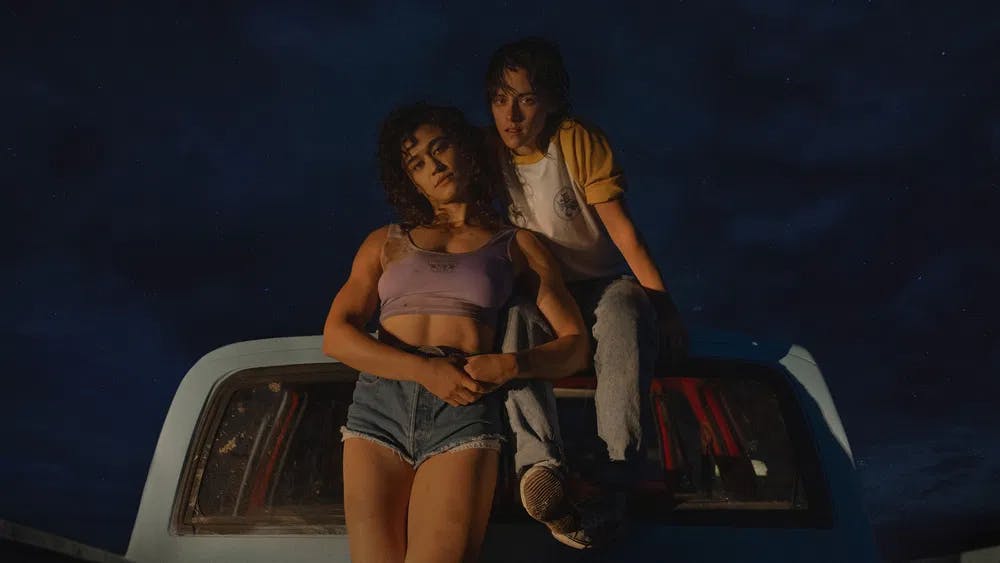
Midnight marauders: Kathy O'Brien and Kristen Stewart in Midnight sensation "Love Lies Bleeding" / Photo courtesy of The Sundance Institute.
Premieres
Heavy hitters, big stars, and recognizable personalities worldwide get some American indie cachet with a Sundance Premiere. Most come already with distribution deals and release dates. Then again, the showcase may be for naught. This year’s hot ticket, David and Nathan Zellner's “Sasquatch Sunset,” opened a few weeks post-Sundance to the box-office utter indifference.

Their moment in the sun: Riley Keough and Jesse Eisenberg at the "Sasquatch Sunset" premiere. / Photo by George Pimentel, courtesy of Shutterstock for The Sundance Institute.
New Frontier
Forget movies, as you know them. This sidebar includes audiovisual experimental projects. 2024 brought just three contenders, including Gary Hustwit's “Eno,” a “generative documentary” about legendary musician Brian Eno that uses an algorithm to re-edit it every time you watch it. I don’t know you, guys, but to me, that sounds exhausting. It’s review-proof, too. If you pan a cut that sucks, maybe nobody else will watch it! Same if you see a good one!

Re-edited by an algorithm: "Eno" contains multitudes of portraits of the famous musician and producer Brian Eno. / Photo courtesy of The Sundance Institute.
Spotlight
This section is “a tribute to the cinema we (they) love, presenting films that have played throughout the world.” That’s code for “they premiered at other festivals.” Case in point: “How to Have Sex.” Molly Manning Walker’s coming-of-age in the party circuit drama opened at the 2023 Cannes Film Festival, where it took the Grand Jury Prize. Streamer MUBI acquired distribution rights at Cannes. The movie had its American premiere at Park City almost nine months later. Since Sundance only allows world premieres in their competitive categories, this is a nice place to put movies already championed by other festivals as a first station in their US distribution window.

24-hours party people: Enva Lewis and Mia McKenna Bruce in "How to Have Sex." / Photo by MUBI, courtesy of The Sundance Institute.
Family Matinee
The name says it all, but it feels like an afterthought if you look at the program. The 2024 selection included just two flicks: Christopher Jenkins' “10 Lives,” an animated feature from the U.K., and Amber Sealy's “Out of My Mind,” an American live-action drama about a wheelchair-bound teenage girl with cerebral palsy navigating the minefield of high school. Granted, it is unlikely that festival goers are dragging their kids around, but if the organization were more ambitious, they could make this a strong hub for kiddie cinema.

Kitty!: Sundance makes a timid incursion into family fare with just two movies, including the animated "10 Lives" / Photo by 10 Lives, courtesy of The Sundance Institute.
Special Screenings
Just two movies got the 2024 Special Screening brand. The first one is Bao Nguyen's "The Greatest Night in Pop." Netflix’s documentary tells the story behind the recording of “We Are The Word,” which united some of the most popular musical stars of the '80 to put out a single in solidarity with famine-devastated Ethiopia. The second one is more intriguing. Director Jesse Moss, with two Sundance prizes under his belt for the documentaries “The Overnighters” (2014) and “Boys State” (2020), tries his hand at a docu-drama hybrid with “War Game,” in which real-life politicians and state officials are locked in a makeshift bunker, role-playing the government's response to a military coup. Why programmers didn’t fold these two into Premiers or Spotlight is a mystery.

Governor Steve Bullock, General Wes Clark, Major General Linda Singh, and many other real-life politicos play a "War Game" / Photo by Wolfgang Hess, courtesy of The Sundance Institute.
Why the Sundance Film Festival Exists?
It all began with a wrong turn. Legend has it that in the late sixties, Robert Redford drove through the west and arrived by mistake at the Provo Canyon. Besotted by the snow-covered paradise, he bought some land to preserve it. As far as stars’ whims go, this one gets our approval. At the time, Redford was ramping up on his Hollywood career. The one-two punch of “Butch Cassidy and the Sundance Kid” (George Roy Hill, 1969) and “Downhill Racer” (Michael Ritchie, 1969) had turned him into a critically-acclaimed, bankable name. “Jeremiah Johnson” (Sydney Pollack, 1972), one of his signature movies, was partly shot on his property in 1971.

What about Bob?: Redford in 1973, while shooting the studio production "The Sting." / Photo by Ken Dare, courtesy of Los Angeles Times Photographic Collection at the UCLA Library. License by Creative Commons.
Film school grad Sterling van Wagenen and Utah State Film Commissioner John Earle worked together to found the Utha/U.S. Film Festival. Their motivations intertwined in a perfect storm: love of film and municipal promotion, all to bring more visitors to the Beehive State, whether to make a movie or to watch a bunch in competition. The first edition took place in 1978. At the time, van Wagen was the director of Redford’s production company, Wildwood Enterprises. The actor eagerly participated in the proceedings as the resident star. Alas, the project struggled and went into red numbers.
Redford’s ambitions went beyond conquering Hollywood. He wanted to nurture new talent and create the conditions for movies to develop without studio meddling, keeping commercialism at bay. In 1979, he started a pilot project for what would become The Sundance Film Institute. By then, the Utah Film Commission was ready to nix the Festival, but new management saved the day. In 1984, the Sundance Film Institute took over the event. In 1991, the symbiosis was complete. The U.S. Film Festival became The Sundance Film Festival. The rest is history.
Where does Sundance Take Place?
Every late January to early February, troves of filmmakers and journalists take over the ski resort town of Park City, Utah, well, at least until 2026. That’s when the Festival’s contract with the city of Salt Lake City expires. The organization announced it was looking for other viable locations to host the event, starting with the 2027 edition.
So, as of today, Park City has two more years on duty. Sundance raised some interesting issues in its press note. Since the seventies, the event has grown exponentially. More than 17 thousand films from 153 countries vie for a slot in the competition. The two screens in the first edition have multiplied to 15 venues, with a spillover into Salt Lake City that adds four more for 19. A bigger city may expand the number of screens to make the fest bigger.

Leaving The Egyptian behind?: Sundance may move to another city starting in 2027. / Photo by Jutharat Pinyodoonyachet, courtesy of The Sundance Institute.
Regarding journalists and critics, the scarcity of lodgings and the relative remoteness of the place brings the cost of attending up, limiting coverage to big outlets and most connected freelancers. One would think virtual access - so gracefully deployed during the pandemic shutdown - would help to fix that problem. Still, the Festival has been limiting it progressively and turning tingly with remote accreditation. Their preferred coverage is in situ. A move to a bigger, better-connected city might make the Festival more accessible. You know, so that more critics from minority groups can do some coverage. Diversity is cool, right?
Alas, as far as these things go, the most probable outcome will be that the two parts reach an agreement. Expect the Utah government to upgrade and expand its screening capacity to keep the fest around.
How Do You Compete at Sundance?
The official dates to apply to the 2025 Festival are still unknown. Historically, we can assess that early submissions for Short Films begin at the end of July, with Feature Films, New Frontier Projects, and Episodic Content following suit on the first days of August. As usual, you will save a few bucks if you submit early. The closer you get to the deadline of September 25, the fee rises from $70 to $115 for feature films. Saving $45 bucks doesn’t sound like much, but those fees add up. Remember, you are not submitting your project to just one Festival. Or rather, you shouldn’t!
As you can gather from the numbers the Fest has released, the competition is fierce. We believe in your work but bear in mind that with 17 thousand films vying for attention, the selection committees make hard choices that leave thousands of filmmakers in the lurch. But a surefire way to improve your chances is to get in the Sundance fold early in your creative process.

The woman who made "The Cow...": Chilean filmmaker Francisca Alegría developed her movie through the Sundance Institute's Artist Programs. / Photo courtesy of the Miami Film Festival.
The institute holds several Artist Programs to help you develop projects. A Development Track for feature films encompasses fellowships, grants, and a Screenwriter’s Lab. The application process closes on May 16. There’s still a chance to apply to their other programs: the Indigenous Program, Documentary Fund, the Sandbox Fund for those who want to explore the connection between science and culture through storytelling, and many other opportunities. We can’t assess your chances without publicly available information about enrollment. As competitive as it can be, we doubt the number of applications is as high as the Festival. Visit the Sundance Institute for more information.
You’d be surprised at the number of filmmaker who win awards or compete in the Shorts category and return years later with feature films that expand their work or new projects that make it into other categories. “Emergency” (Carey Williams, 2022) and “The Cow Who Sang a Song into the Universe” (Francisca Alegria, 2022) are good examples of this trend.
Who Decides the Winners
Each of the five competitive categories outlined above has a three-person jury formed by filmmakers and artists from every discipline. Add a special jury for the Shorts Competition and a five-person team that decides which movie in the competitive categories will take the Alfred P. Sloan Feature Film Prize, awarded to movies focusing on science and technology.

Multi-hyphenates Lena Waithe, Debra Granik, and Adrian Tomine were the U.S. Dramatic Competition jurors at Sundance 2024. / Photo by George Pimentel, courtesy of Shutterstock for Sundance Film Festival.
Parting Words
It can be hard for Sundance to sustain its reputation as an alternative to the system 40 years after its inception. In a way, it has become part of the system. In 1995, a group of filmmakers started Slamdance, an alternative for those turned away by the Fest, which had the last word on indie cool. It doesn't matter. The brand is strong, and the filmmakers who manage to get in have a leg up when establishing a career. Make your movie, apply, and cross your fingers.
Want to get an email when we publish new content?
Subscribe today